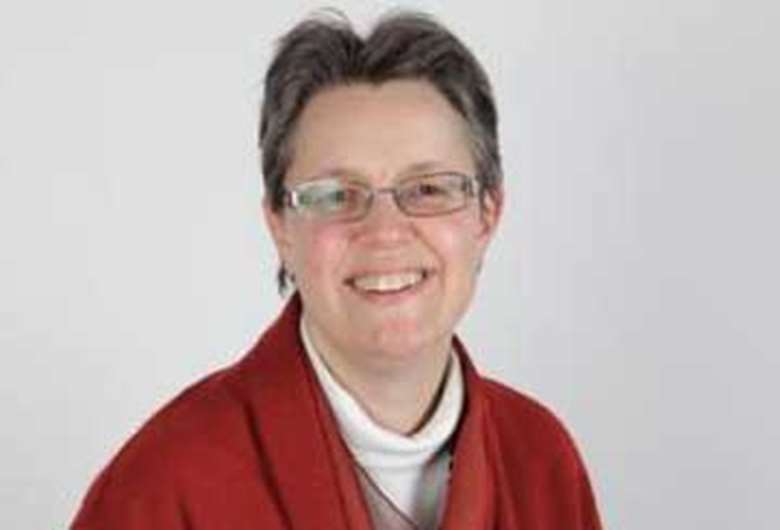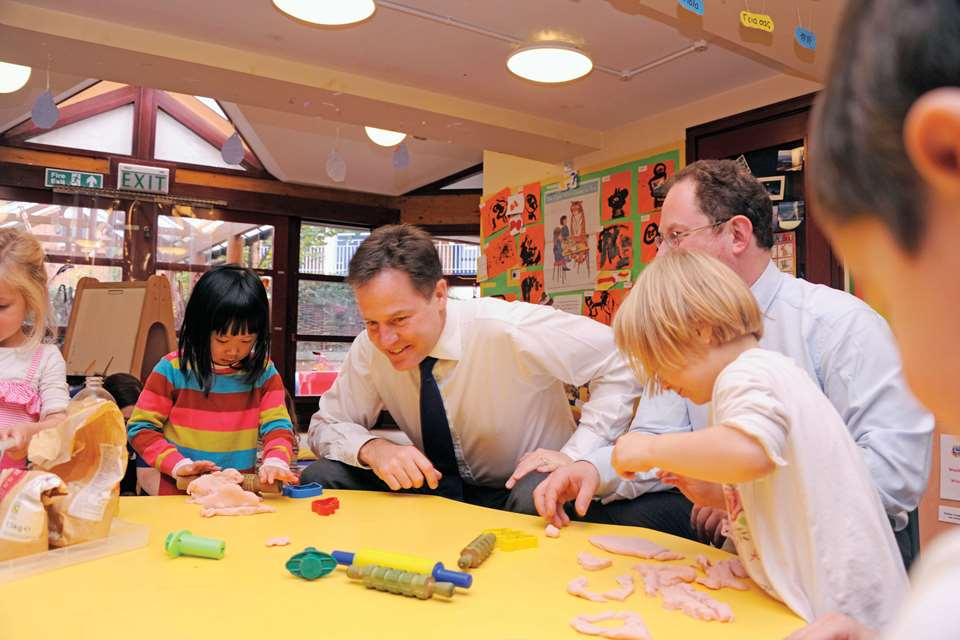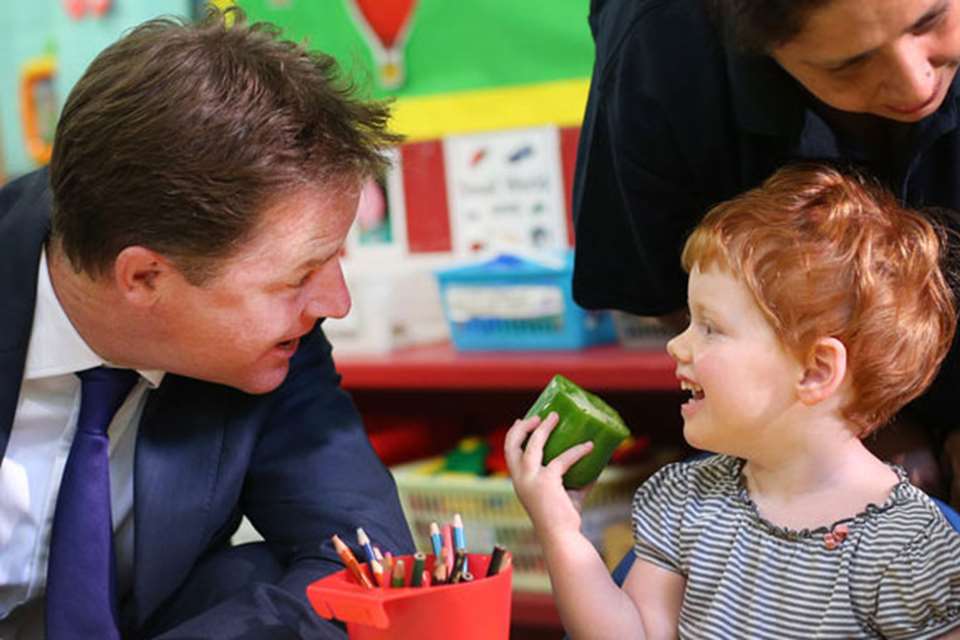Strengthening the impact of the EYPP
Janet Grauberg
Thursday, August 21, 2014
Janet Grauberg, editor of CentreForum's recent early years report, calls for commitment and clarity on the Early Years Pupil Premium

I welcome the introduction of an Early Years Pupil Premium (EYPP). From the work undertaken to edit CentreForum's Early Years: Valuable Ends and Effective Means, I support the analysis set out in Section 3 of the Consultation Document, in particular the statements relating to the impact of quality on improving the outcomes for disadvantaged children.
However, I think implementation of the EYPP would be strengthened if the Government were to set out a commitment to continuing the EYPP beyond 2015-2016, and whether it wishes, over time, to increase the funding available and the level of the EYPP. This was the approach taken with the Pupil Premium.
I understand the challenges of making forward spending commitments, but the approach to implementation is different if 2015-2016 is seen as the start of a transitional period, rather than the final position. The response to the Consultation would be an opportunity to make the Government’s position clear.
The level of the premium
Looking at Figure 4 of the Consultation Document, it is clear that a key challenge lies in ensuring that more children from disadvantaged backgrounds attend good or outstanding settings. The EYPP needs to be set at a level which will encourage excellent providers to reach out to such children and attract them to their setting, in the way that schools are now being encouraged to do with the schools premium. Early years settings, operating in a genuine market where funding follows the child, are likely to be much more responsive to this approach than schools have traditionally been. The simple fact is that £300 a year, or an additional £0.53 per child per hour is not sufficient to act as such as an incentive.
In addition, the principle of the Early Years Pupil Premium should be that an eligible child receives the same amount of money whichever setting they attend. Under the current proposals, this does not seem to be the case. A disadvantaged four year-old in a reception class in a maintained school will attract the primary school premium of £1,300, while the same four-year-old who remains longer in a pre-school or nursery environment will only attract the EYPP of £300.
While it is the case that the current system is iniquitous (the disparity in funding is currently £1,300 to £0 and will be £1300 to £300 going forward), the break between the early years system and the school system is well accepted. The introduction of an Early Years Pupil Premium explicitly modelled on the school-age Pupil Premium shines a spotlight on this issue.
I would therefore argue that the Government should commit to increasing the level of the EYPP, over time, so that it matches the level of the primary premium.
Eligibility for the EYPP
I support the proposed eligibility criteria for the EYPP as set out in Section 4 of the Consultation Document. It is vital, however, that the issues raised in para 4.3 are resolved so that the delivery of the EYPP is not compromised by the roll out of Universal Credit.
The CentreForum Report argued that, in order to achieve the objective of 'narrowing the gap' in the outcomes of disadvantaged children and their peers, there needs to be investment both in high quality early years education, and in supporting parents in providing a home environment that supports their children’s learning. The additional £200m funding for low income families through Universal Credit will be an important part of this and ensuring policy coherence across this policy and the EYPP will be critical to getting the best value from both sources of funding.
I support the proposal in para 4.7 not to introduce an 'ever FSM' measure. However, the Government should state whether the 'ever 6' measure used for the schools premium will be altered to include reference to the EYPP.
I support proposals to extend the EYPP to children who are in care. However, the proposals outlined appear to miss a group of children who might attend an early years setting in a different LA area from the one which has placed the child.
For example, a young child in care may be placed with a relation in another part of the city, or with a foster carer out of the borough, and the child attends a setting in that area. Alternatively a child might live in the borough but attend a setting near to their carer’s work or college. In these cases the statements 'local authorities will know which children are in their care' may not be true, as the LA where the setting is placed may not know that a child in care is attending it.
Use of Early Years Pupil Premium
I disagree with the decision not to impose conditions on providers on how the EYPP is spent. I believe that the situation is different from schools, where the state has intervened to guide what is taught and how it is taught for decades, and where there is a stronger evidence base on what works.
The precedent is the decision by the current Government to retain an early years curriculum (EYFS) for all early years providers in response to Dame Clare Tickell’s EYFS Review, while freeing academies and free schools from the national curriculum in the compulsory education phase.
Given the strength of the evidence presented in section 5.14 of the consultation document the Government should
- Require that the EYPP is spent on increasing the quality of staffing in a setting to at least a minimum of a graduate leading every setting and working directly with children
- As the level of the EYPP grows towards equivalence with the level for primary children, increase the workforce quality requirements so that they meet the standards recommended by Professor Nutbrown of a graduate-led, Qualified Teacher Status profession, with a workforce trained to Level 3.
However, if the Government is committed to growing and developing the EYPP over time, it is possible to see the imposition of conditions as part of these 'transitional arrangements'. In the same way as the Government responded on the Tickell review, and as the EYPP grew, there should be an aspiration towards greater flexibility.
A key part of the development of the EYPP will be the role of the Education Endowment Fund in developing an accessible evidence base on the interventions that work to support narrowing the gap in outcomes in early years. The decision to extend the remit of the EEF to early years is extremely welcome, however it will be many years before the level of information available to settings will be as detailed and deep as the Toolkit for the Pupil Premium.
In addition, because of the structure of the early years sector (a large number of very small settings and sole traders), it is to be expected that diffusion of the evidence base may take longer than in the school sector, and so the Government should consider encouraging the Education Endowment Fund to develop a programme of 'assertive outreach' as it develops its evidence base. An accessible, well-used evidence base should be the precondition for reducing the conditionality on how the EYPP is spent.
Maximising impact of the EYPP
I support the role of Ofsted described in Section 6 of the consultation document, and the ambition to track the progress of children throughout their educational career.
However, the proposed approach to tracking child outcomes needs further development. Leon Feinstein, in his contribution to the CentreForum report made the point that more needs to be done to understand what relevant child development outcomes might be. This is shown by the plethora of tools currently being used – the NHS Healthy Child Programme uses the 'Ages and Stages Questionnaire (ASQ)', early years settings use the EYFS Profile, although this is no longer to be mandatory, while many of the key studies (such as EPPE) use a bespoke questionnaire. The new reception baseline, designed to provide a baseline for what matters at age 11 (KS2), will definitely not be suitable for measuring developmental outcomes for three- and four-year olds.
In my view this is an urgent piece of work. While everyone across the political spectrum and across the sector supports the objective of 'narrowing the gap in outcomes' there has been very little debate, and no consensus on what 'outcomes' are being referred to. The Government should urgently bring together experts who have been involved in the ASQ, EPPE and other studies, to develop a relevant child outcomes framework which will genuinely identify whether the EYPP is achieving its ambition of 'narrowing the gap'.
Conclusion
The introduction of the Early Years Pupil Premium is welcome, and in general the proposed approach to implementation is sound. However it would be likely to have more impact if
a) The Government made a clear commitment to expanding the funding available and the level of the EYPP over time
b) The Government saw the first years of operation of the EYPP as a transitional period, imposing stronger evidence-based conditions on how the EYPP was to be spent over this period
c) The Government took the lead in stimulating a debate on which “outcomes” the EYPP was seeking to address, and how “narrowing the gap in outcomes” was to be measured.
- Janet Grauberg is a policy and strategy consultant and is Editor of Early Years: Valuable Ends and Effective Means, a CentreForum Report published in July 2014.
- The Report is available on the CentreForum website at http://centreforum.org/assets/pubs/early-years.pdf. To accompany the report CentrFoum also published a background summary of policy interventions over the last 20 years which can also be found at www.centreforum.org.)








